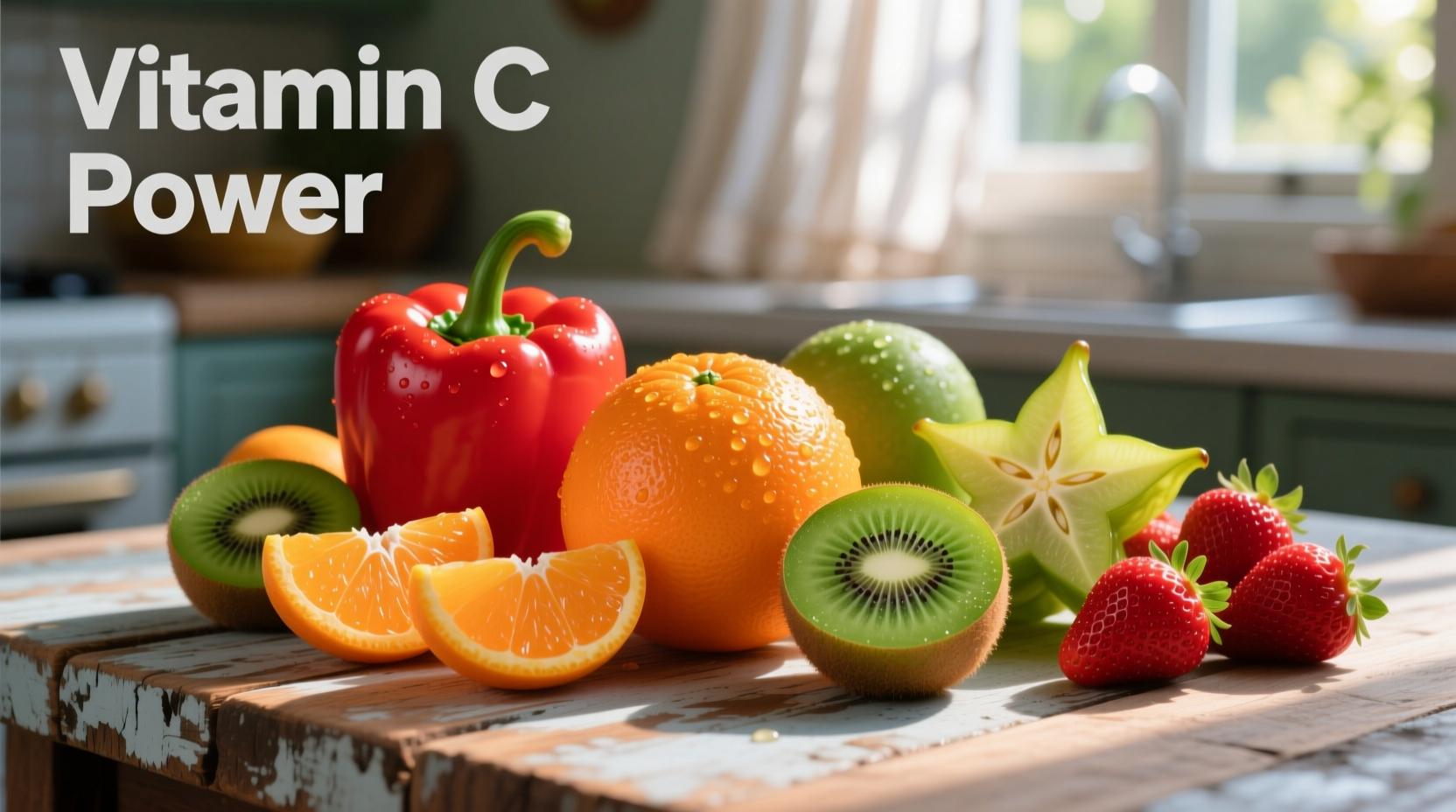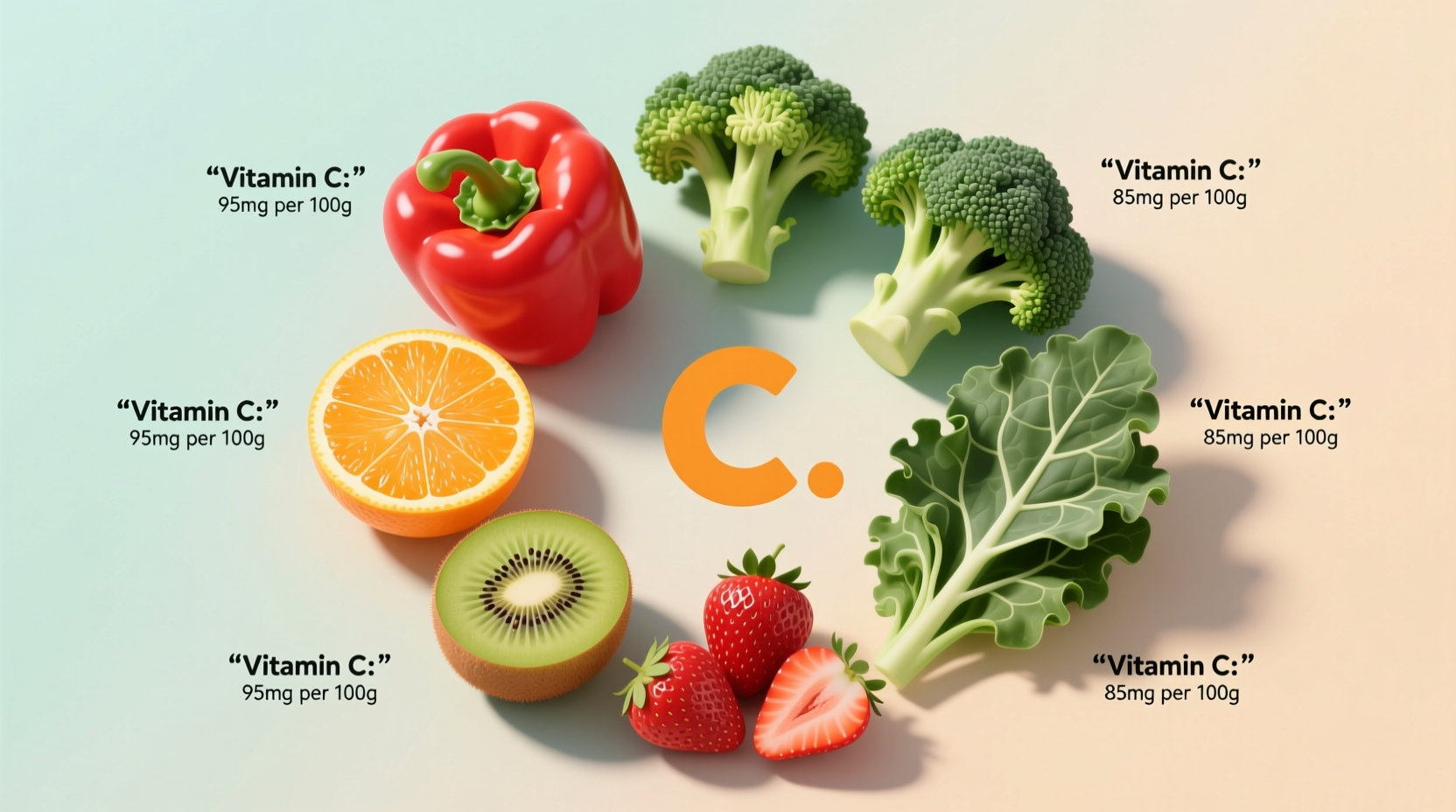When searching for natural vitamin C sources, you need accurate, science-backed information to make informed dietary choices. Vitamin C, also known as ascorbic acid, is a water-soluble nutrient essential for immune function, collagen production, and antioxidant protection. Unlike most animals, humans cannot produce vitamin C internally, making dietary intake crucial for maintaining optimal health.
Top Vitamin C Food Sources by Category
Based on the latest USDA FoodData Central database, these foods deliver the highest concentrations of vitamin C per standard serving. Understanding these natural sources helps you create balanced meals that meet your daily requirements without relying on supplements.
| Food Source | Serving Size | Vitamin C (mg) | % Daily Value |
|---|---|---|---|
| Guava (raw) | 1 cup | 377 | 419% |
| Yellow Bell Pepper (raw) | 1 cup | 341 | 379% |
| Kale (cooked) | 1 cup | 89 | 99% |
| Strawberries | 1 cup | 89 | 99% |
| Oranges | 1 medium | 70 | 78% |
This comparative data reveals surprising insights about vitamin C content. Many people assume citrus fruits dominate the vitamin C landscape, but certain vegetables like bell peppers actually contain significantly higher concentrations. According to the National Institutes of Health Office of Dietary Supplements, the recommended daily allowance (RDA) for vitamin C is 90 mg for adult men and 75 mg for adult women, with higher requirements for smokers and during pregnancy.
Maximizing Vitamin C Absorption Through Food Preparation
Vitamin C preservation depends heavily on preparation methods. This essential nutrient begins degrading immediately after cutting or cooking due to its water-soluble nature and sensitivity to heat, light, and oxygen. Understanding these factors helps maintain maximum nutrient content in your meals.
Research from the Journal of Food Science demonstrates that steaming preserves approximately 90% of vitamin C in vegetables compared to boiling, which can leach up to 60% of the nutrient into cooking water. Raw consumption generally provides the highest vitamin C levels, but certain cooking methods can actually increase bioavailability in specific foods.

Seasonal Availability and Storage Techniques
Seasonal eating significantly impacts your vitamin C intake. During summer months, fresh berries and stone fruits provide abundant vitamin C, while winter offers citrus fruits and hardy vegetables like Brussels sprouts. The USDA Agricultural Research Service confirms that locally grown, in-season produce typically contains 20-30% higher nutrient levels than off-season imports.
Proper storage extends vitamin C retention. Store cut fruits in airtight containers in the refrigerator, as exposure to air accelerates degradation. For vegetables, keep them in cool, dark places—potatoes and onions maintain vitamin C content better when stored separately, as onions release gases that degrade nutrients in nearby produce.
Practical Daily Integration Strategies
Meeting your daily vitamin C requirements doesn't require complicated meal planning. Simple additions to your existing routine can significantly boost intake:
- Add raw bell peppers to sandwiches and wraps instead of lettuce
- Include kiwi or strawberries in morning yogurt or oatmeal
- Prepare a weekly batch of vitamin C-rich smoothie packs with frozen berries
- Use lemon or lime juice as a finishing touch on cooked dishes
- Snack on raw broccoli or cauliflower with hummus
A single cup of raw yellow bell pepper provides more than your entire daily requirement, making it an exceptionally efficient vitamin C source. For those following plant-based diets, incorporating these foods ensures adequate intake without supplementation.
Special Considerations and Limitations
Vitamin C needs vary across different demographics. Smokers require an additional 35 mg daily due to increased oxidative stress, while pregnant women need 85 mg and breastfeeding women need 120 mg according to the World Health Organization. Certain medical conditions like malabsorption disorders may necessitate higher intake or supplementation.
While food sources remain ideal, vitamin C supplements become necessary in specific circumstances. However, research published in the American Journal of Clinical Nutrition indicates that natural food sources provide additional phytonutrients and fiber that enhance overall health benefits beyond isolated ascorbic acid.
Common Questions About Vitamin C in Food
Understanding these frequently asked questions helps optimize your dietary planning and address common misconceptions about vitamin C sources.











 浙公网安备
33010002000092号
浙公网安备
33010002000092号 浙B2-20120091-4
浙B2-20120091-4